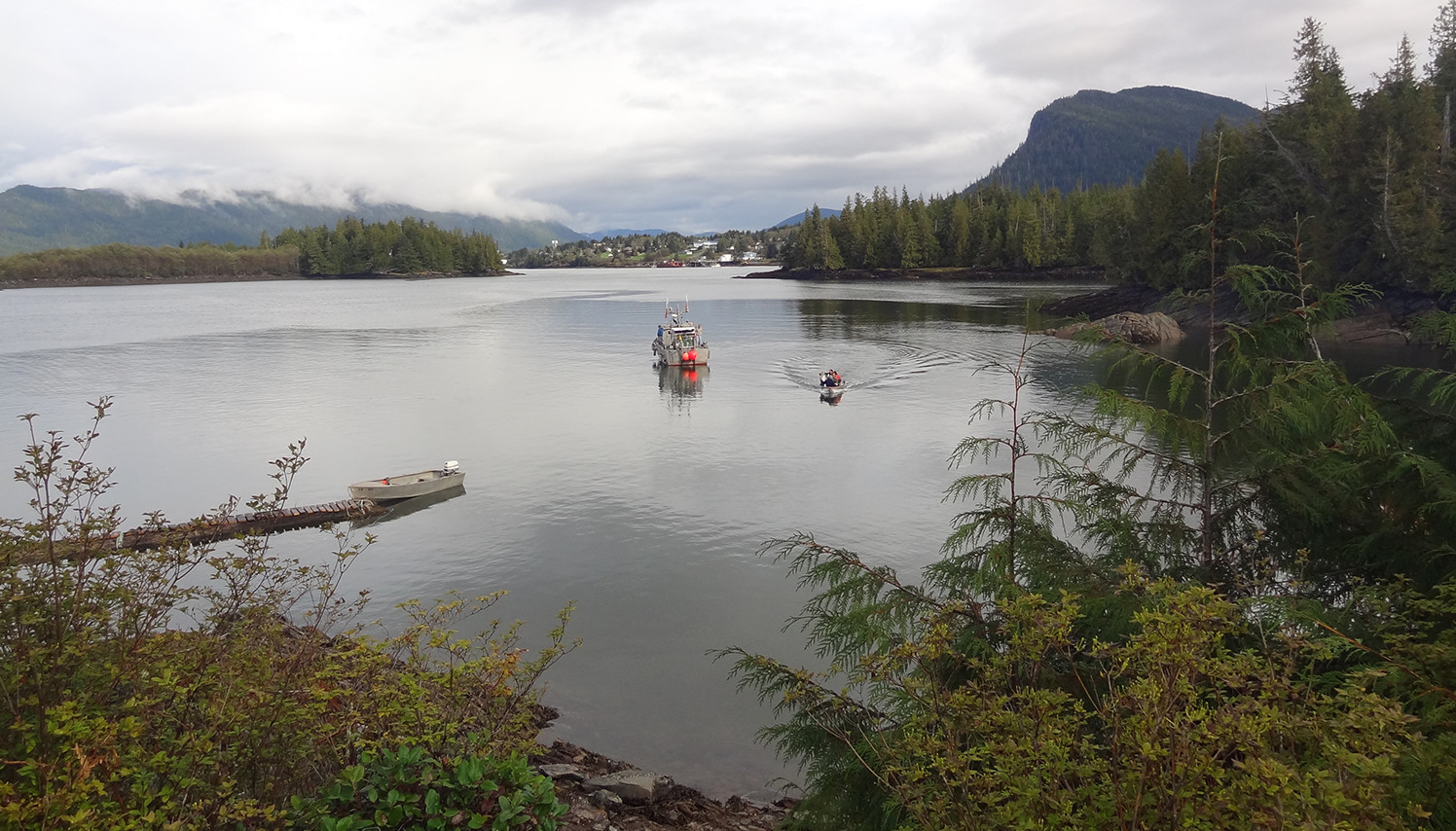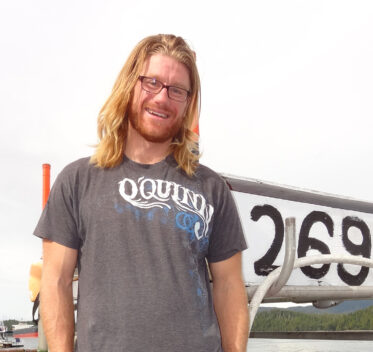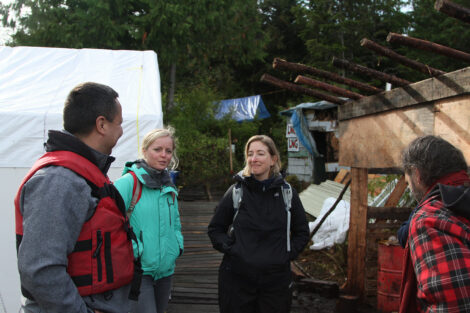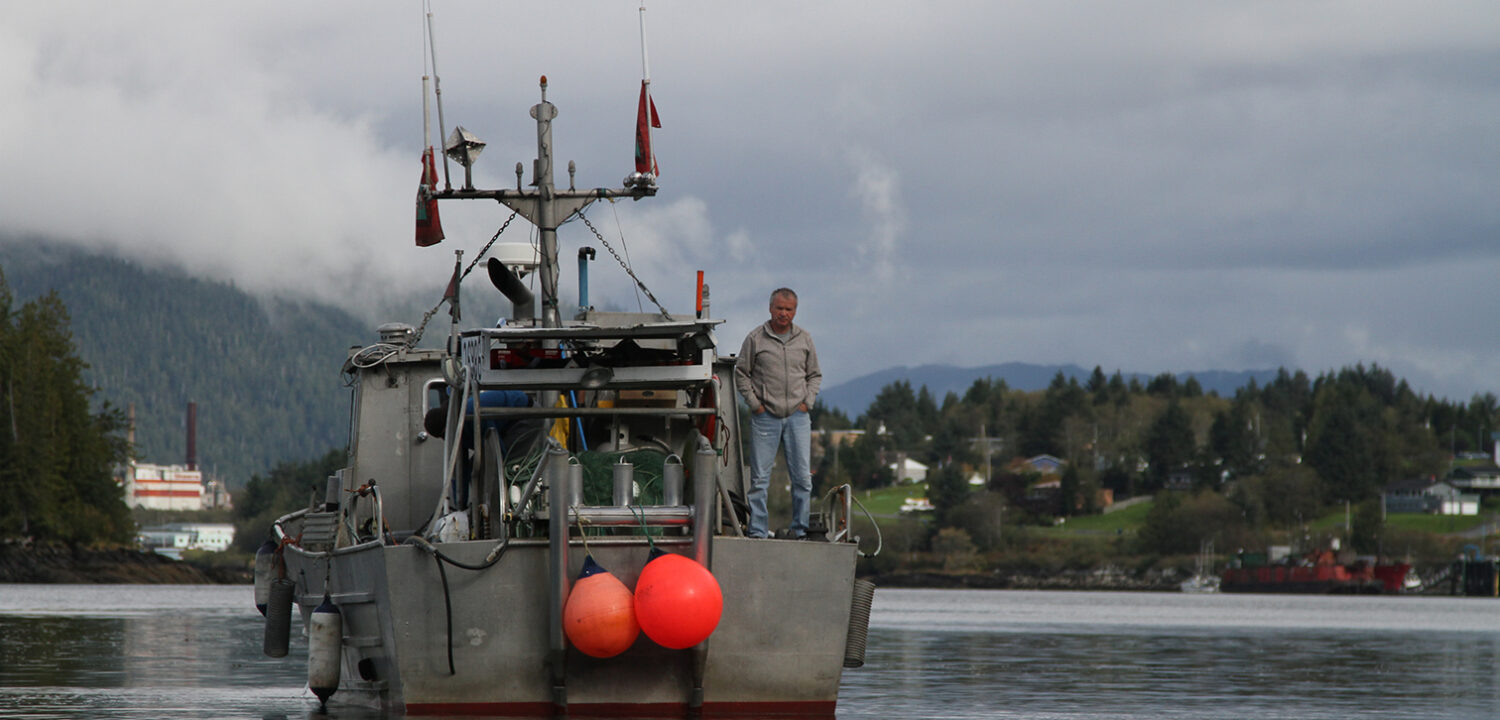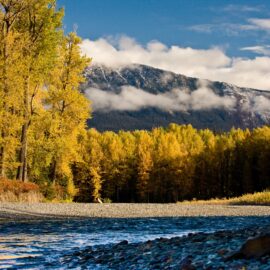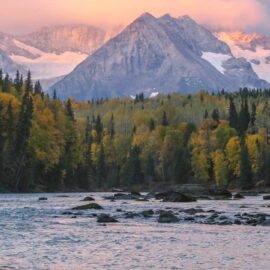Inside the daily struggle to protect the Skeena from a poorly-planned gas terminal.
The rain pelted down and a low fog hovered over the water as we slowly made our way to northern British Columbia’s Lelu Island on a recent fall day. Known as Lax U’u’la to the Lax Kw-alaams First Nation, the coastal island at the mouth of the Skeena River sits in their traditional territory. Our boat captain, Donnie Wesley (pictured above), is the Lax Kw’alaams Hereditary Chief, a fisherman and now the ferryman to the occupation camp on Lelu where he and a small coalition from local First Nations are reasserting their title to the island. Today, he is ferrying his son Joey, myself and Kim Kosa from Wild Salmon Center, and our partners Kirby Muldoe and Quinn Barabash from SkeenaWild Conservation Trust.
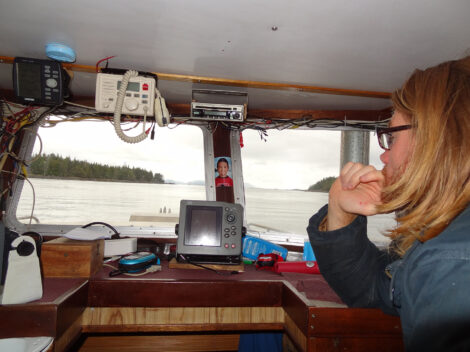
From the captain’s cabin I can see a 110 ft ocean-going vessel drilling and collecting samples for a proposed Liquefied Natural Gas (LNG) terminal. The $36 billion project led by Malaysian state-controlled Petronas would construct a terminal on top of Lelu Island here at the Skeena’s mouth. The Skeena is one of British Columbia’s most important salmon and steelhead rivers, with annual returns reaching 10 million fish. The eelgrass bed of Flora Bank, next to the island, is used by an estimated 80% of juvenile salmon and steelhead as they migrate to sea each year.
Donnie comes to a stop just hundreds of yards from the vessel. “They couldn’t have put [this project] in a worse possible place,” Donnie says. “It’s right at the mouth of the second biggest salmon-bearing river in British Columbia. Do we really want to give that up?”
The site for the gas terminal was chosen without consulting local First Nations and Skeena communities. Then in May Petronas’ local affiliate offered the Lax Kw’alaams First Nation $1.25 billion to buy their consent on the project. Incredibly, they unanimously voted against the offer, citing concerns about salmon habitat. But the BC government allowed the developers to begin exploratory work anyway. Members of the Lax Kw’alaams decided to file for aboriginal title to the island. They began exercising their aboriginal rights – and moving to prevent further research and development – by occupying the island on August 25. SkeenaWild, a close partner of Wild Salmon Center, has been supporting the Lax Kw’alaams through this difficult but important time.
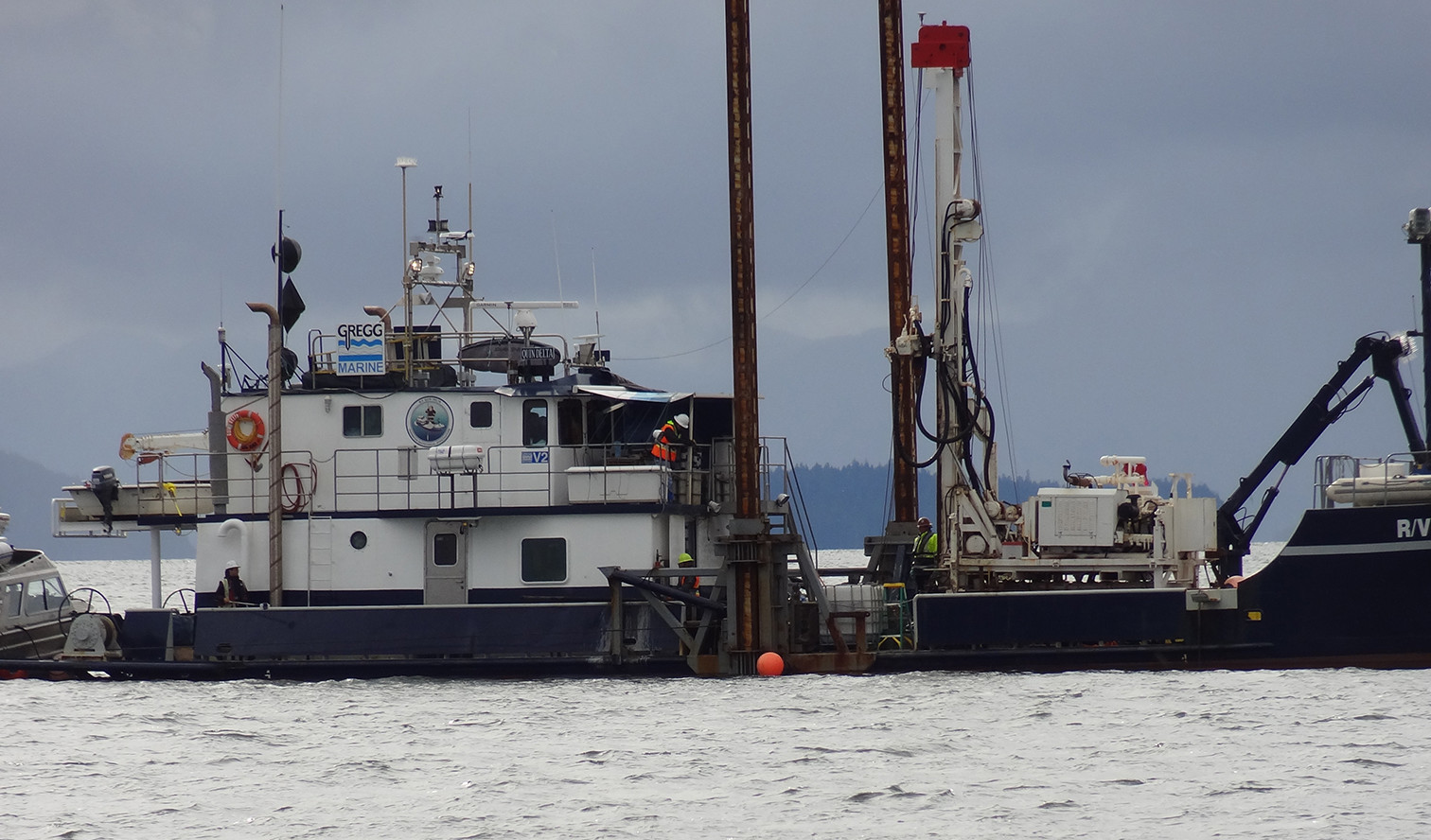
The camp had humble beginnings with only a lean-to tarp, dirt floor and sleeping bags for its occupants. Hard rains in the early weeks meant wet, sleepless nights for the island’s early occupants. Since then, people from other first nations and local communities have stepped forward to pitch in, contributing tents, lumber, generators, and gear so that it is now positioned to better house its committed crew.
On day 24 of the occupation, our convoy brought over sleeping pads and snacks, including long promised doughnuts from Tim Hortons – a staple of the Canadian diet. The atmosphere there was reserved but hopeful as the Nine Allied Tribes of the Lax Kw’alaams had officially announced Title litigation to Lelu Island just a day before our arrival. As we scrambled to get items on the makeshift dock and up the muddy hill to the line of tents, I had to wonder how it was for the occupants of the camps who had left their jobs, gave up the comforts of home and family, and generally put their lives on hold. But the only signage on the island, “NO LNG: Our future, our choice,” posted to an old collapsing shed, said it all. As Donnie stated in his first days of occupation, “If you take away the fish, then you take away the people. It’s as simple as that.”
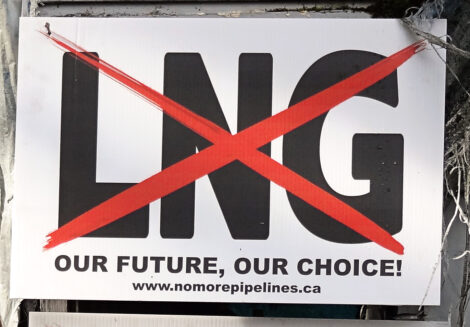
“This issue is not just a First Nations issue but one that will affect all British Columbians,” noted SkeenaWild director Greg Knox, “especially those who rely upon healthy and abundant fish stocks, and a variety of species at the mouth of the Skeena River.”As they enter into the fourth month of occupation and the cold chill of winter, I am awed by the dedication of this group of people who boldly stand up for a place and a way of life they have celebrated and fought for for many generations. They continue to make progress on the island with a permanent structure near completion and hopes for additional structures to support visitors.
In early November, First Nations, environmental groups, and the fishermen’s union called on Prime Minister Justin Trudeau to reject the LNG facility. Just weeks later Trudeau directed the Fisheries Minister to place an oil tanker ban on BC’s Coast and take other measures to restore environmental legislation and protect fisheries. While these are hopeful signs, Petronas and its partners have deep pockets and tens of millions already invested in the terminal project at Lelu Island.
The BC First Nations coalition is prepared for a long fight to keep the mouth of the Skeena wild and healthy. And we’ll be right there with them.
